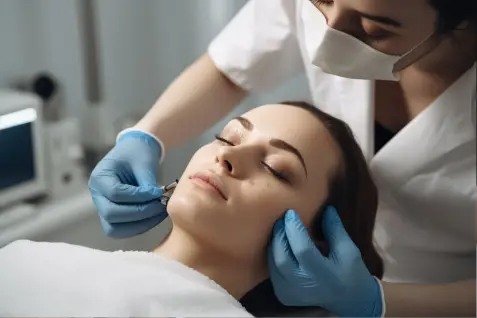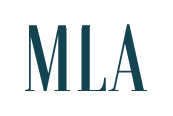ACNE TREATMENT CENTER
TREATMENT OPTIONS
Acne is a common skin condition that affects millions of people worldwide. It occurs when hair follicles become clogged with oil and dead skin cells, leading to the formation of pimples, blackheads, and whiteheads. While acne can be frustrating and sometimes painful, there are a variety of treatments available to help clear up the skin. Here are the most effective treatments and the different types of procedures used to treat acne, from topical and oral medications to cosmetic procedures like chemical peels and laser therapy. We can work with you to find the best treatment plan for your unique skin concerns.
TOPICAL MEDICATIONS
The application of medications to the skin surface is very helpful for controlling active acne and for preventing acne flare-ups. Topical medications represent the most common type of acne treatment currently utilized. Commonly used topical medications include the following:
Topical antibiotics such as erythromycin, clindamycin, and sodium sulfacetamide to reduce surface bacteria
Benzoyl peroxide to reduce surface bacteria
Retinoids such as Retin-A, Retinol, and Tazorac to unplug the pores, gently exfoliate the skin, reduce inflammation, and increase cellular turnover
Azelaic acid to soothe inflammation and reduce surface bacteria
It is very important that patients follow their topical skin care treatment plan carefully, as the ultimate amount of improvement obtained depends at least in part on how well patients take care of their skin at home.
ORAL MEDICATIONS
Oral medications are often used in combination with topical medications. At the Acne Treatment Center, we may at times prescribe the following oral medications:
Antibiotics such as minocycline, tetracycline, and doxycycline to control the growth of bacteria in the skin and in the sebaceous glands
Birth control pills and spironolactone (aldactone) to control the hormonal component of acne (only in women)
Accutane, as a last resort, to control acne that has been resistant to improvement through any other means of treatment

EXTRACTION OF ACNE LESIONS
Extraction of acne lesions refers to the drainage of pus, oil, and bacteria from acne lesions. Removal of these substances relieves any pain and pressure that may be present, shortens the healing time, and reduces the risk of acne scarring. Extraction of an acne lesion is occasionally followed by injection of the lesion, as described next.
INJECTIONS OF ACNE CYSTS & NODULES
With this treatment, a dilute steroid is injected directly into one or more acne lesions. When used in this manner, the steroid rapidly reduces the inflammation and redness in the lesion. Injection of a pimple with a dilute steroid is the ideal treatment when the skin absolutely and positively must look better within 24 hours. Injections of Acne Cysts & Nodules is one of the secrets of celebrity skin care.
At the Acne Treatment Center, we commonly recommend that our patients have acne facials. The facial begins with a surface cleansing of the skin and a light glycolic acid treatment. This is followed by treatment with steam and extraction of any pimples. Then, a soothing and purifying mask is applied to the face. The final step in the facial is the application of oxygen. The Acne Facial improves acne, lightens any dark blemishes, and leaves the skin glowing. The facial should be repeated at monthly intervals until the skin is clear, and should be thought of as an integral component of the acne care program.
Chemical peels may also be used to treat acne. Chemical peels for acne work by removing the surface layers of the skin, thus exposing the deeper less involved layers of the skin underneath. When chemical peels are done for acne, they are generally relatively mild. Appropriate peeling agents for acne include 20-40% glycolic acid, 10-25% trichloroacetic acid (TCA), and salicylic acid. Regardless of the peeling agent used, a chemical peel for acne will help clear acne blemishes, reduce fine lines and wrinkles, lighten brown spots that result from acne (as well as from the sun or melasma), smooth the skin, and brighten the skin. Patients undergoing chemical peels for acne will generally need to repeat their treatment approximately every four to six weeks.
After an acne chemical peel, the skin may be minimally red and irritated, but the recovery from the peel is very rapid and should be complete within a few hours to a few days.
Recent research has confirmed that the Vbeam Perfecta laser is an effective acne treatment. Vbeam Perfecta laser treatment can significantly reduce both inflammatory acne and non-inflammatory acne. Generally, a series of three Vbeam laser treatments are given at 2-week intervals. Following laser treatment, inflammatory acne lesions are reduced by an average of 85% and non-inflammatory acne lesions are reduced by approximately 70%. In addition, the laser will help improve acne scars and reduce redness in the skin.
The Fraxel laser is the gold standard for the treatment of acne scarring. With the Fraxel, the acne scars are improved over a series of 4 or 5 laser treatments. The Fraxel laser utilizes Fractional Resurfacing Technology in which only a portion of the skin actually receives the laser light. With this technology, the laser delivers a series of closely spaced microscopic laser spots to the skin while simultaneously preserving normal healthy skin between the laser spots. This preservation of healthy skin results in rapid healing following the laser treatment. The entire face can be treated with the laser in approximately 45 minutes, and there is no downtime following the procedure. We have been extremely impressed by the improvement in acne scarring following Fraxel laser treatment. The Fraxel laser is a “home run” when it comes to the treatment of acne scarring.
To learn more about the Fraxel laser, click here.
PHOTODYNAMIC ACNE TREATMENT
Photodynamic Acne Treatment targets the overgrowth of bacteria and the excessive production of oil by enlarged sebaceous glands. These are two of the causes of acne. Photodynamic Acne Treatment begins with a thorough cleansing of the skin, after which a medication called Levulan is applied to the skin surface for approximately 30 minutes. (Levulan is a 20% solution of Aminolevulinic acid, which is a naturally occurring substance found in every person.) During this half-hour period, the Levulan is absorbed by the sebaceous glands on the face. The facial skin is then exposed to blue light for approximately 8 minutes. The blue light activates the Levulan, and this ultimately results in a significant reduction in the number of bacteria and a reduction in the production of oil by the sebaceous glands. Since the presence of excessive bacteria and oil in the sebaceous glands are two of the root causes of acne, these changes help to clear the skin of acne.
Ideal candidates for Photodynamic Acne Treatment have moderate or severe acne that has not responded well to the usual topical and oral mediations used to treat acne. Photodynamic Acne Treatment is also an excellent alternative to Accutane and its associated potential side effects.
Photodynamic Acne Treatment is very safe and has the advantage of treating the entire face at one time. Patients will need to remain inside immediately after the procedure and the following day. Generally, patients will need two to four photodynamic treatments to obtain an optimum result.
RED LIGHT AND BLUE LIGHT
Blue light treats acne by reducing the number of bacteria that live within the sebaceous glands. During the treatment, the blue colored light is absorbed by naturally occurring substances within these bacteria. This light absorption begins a series of chemical reactions that ultimately reduce the number of bacteria. It is this reduction in the number of bacteria living within the sebaceous glands that leads to the clinical improvement in acne.
Red light enhances this treatment by minimizing the production of chemicals called cytokines, which are chemicals found in the body that cause inflammation. The anti-inflammatory effect of red light reduces the redness and inflammation associated with acne. In addition, the red light stimulates collagen production, resulting in healthier and rejuvenated skin in the acne-affected areas.
The optimum use of light to treat acne combines blue light with red light. The combined treatment is performed over a four-week period of time. Each week, a blue light treatment is followed two to four days later with a red light treatment. Thus, during the four-week period, a total of four blue and four red light treatments are given. There is no pain or downtime associated with these treatments.
More than 75% of patients with mild to moderate acne report an excellent response to the combination of blue light and red light treatment.
By utilizing a specialized light color, the AviClear laser is designed to selectively target and suppress sebaceous glands, resulting in a noticeable reduction of sebum production. This process leads to a significant improvement in acne after a series of three monthly treatments, with each session lasting approximately 30 minutes. Furthermore, patients can resume their daily activities immediately following treatment, as there is no downtime required.
The AviClear laser significantly improves acne over the course of three monthly treatments. Each treatment takes about 30 minutes and there is no downtime afterwards.
SCHEDULE YOUR NEXT VISIT TO THE SANTA MONICA LASER AND SKIN CARE CENTER


